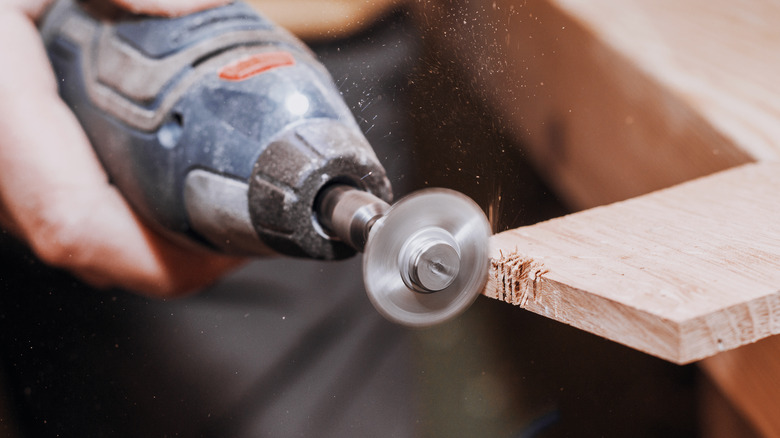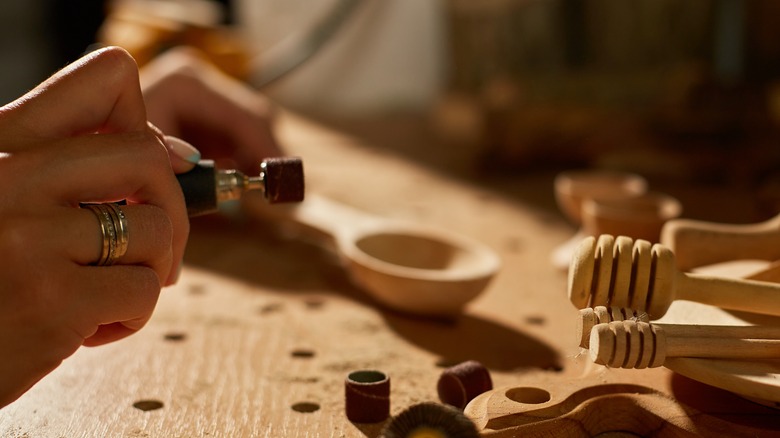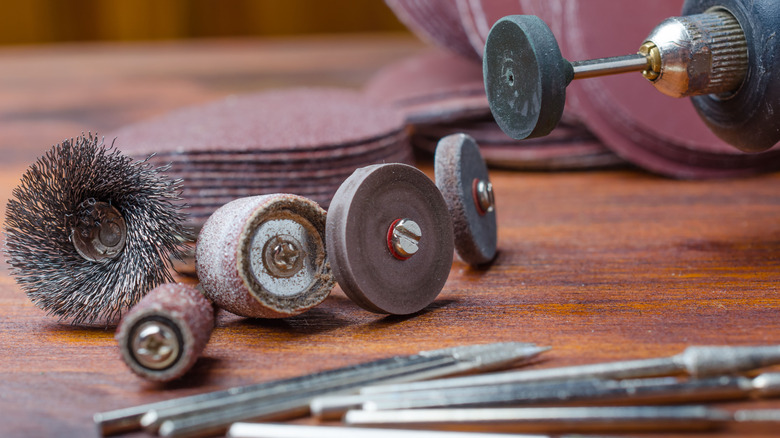Genius Ways You Should Be Using A Dremel Tool Around Your Home
We may receive a commission on purchases made from links.
Sometimes buying a pricey tool leaves you floundering around for ways to use it. It feels like you really need to get your money's worth to stave off buyer's remorse. But it isn't always possible to come up with justifications for your purchase beyond the usual pictured-on-the-box uses (just ask anyone who's ever bought a biscuit joiner). Power rotary tools like Dremel's classic version do not have this problem. If anything, you'll find it difficult to complete a job without coming up with a use for it. The secret to all this usefulness lies not in its advanced capabilities, but in its utter simplicity.
At the core, a rotary tool spins a shaft. What you attach to this shaft — the mandrel — defines what you can do with the gadget, and an awful lot of useful things spin around. Dremel's rotary tool attachments are color-coded according to their general uses in categories like cutting, sanding, engraving, cleaning, polishing, grinding, and sharpening. There's a parade of tools like saw blades, cutoff wheels, sanding drums, wire brushes, polishing wheels, grinding wheels, sharpening devices, and much more available for rotary tools. All of these are extended or refined by a seemingly endless variety of attachments, so you should definitely add rotary tools to your collection of home improvement gadgets.
Crafty uses for rotary tools
Carving and engraving is the largest category of bits for rotary tools — firmly in craft room territory. If you're picturing wood crafts involving powder-blue ducks or carved signs declaring the Smiths as the owners of some cabin or RV, that's only a small part of the picture. Rotary tools are also used for carving, etching, and engraving stone, glass, metal, and more. If you don't have the confidence or a need for hand-etching glass, though, you can probably think of a reason to cut it. Putting a small hole in a glass piece, or cutting the top off a wine bottle, are basic crafting tasks that you can't exactly do with a craft knife. And a rotary tool also makes it easy to perfectly cut plexiglass at home.
With a circle cutter attachment, you start to see the rotary tool's usefulness as a general cutting tool. Dremel makes a good one ($14.99 at Menard's), and we've also used the 3D-printable version from Thingiverse, and it's quite good. This capability — the portability that makes it useful in a circle cutter — is the very thing that rotary tools excel at. Being small, you can work it into small spaces for cutting, shaping, and sanding in areas other power tools can't reach or fit. Accessories like the Flex Shaft ($32.97 at Amazon) enhance this, well, flexibility even further. Try this accessory to give yourself some more room to work when making a stamp or linocut, for example.
Uses around the workshop or garage
There are Dremel, third-party, and DIY versions of many tools that amount to miniature shop tools: drill presses, router tables, and even miniature table saws. These allow you to perform normal woodworking and DIY tasks with an inexpensive, very portable tool. For example, if you want to knock the sharp edge off a piece of wood, it's simple to outfit your Dremel with a router base and round-over bit to do the job. Conversely, it's much less simple to disassemble the wood piece and drag it to the shop where you use router tables, vises, and the like.
The list of useful tasks that are easier with a rotary tool seems endless. One of our favorites is cutting through and removing things that can no longer be properly disassembled, like corroded plumbing connections. You can cut freehand curves in tile (to customize a water line's location, perhaps). If your door is no longer always catching properly when you try to close it, you can make adjustments to the lock's strike plate with a cutting wheel. Got a rusted screw to remove, or one stripped by repeated cam-out from a drill? A cutting wheel can turn it into a slotted screw in no time, giving you enough purchase to back it out. And the very best use of all is cutting out the tool-specific compartments from those irritating blow-molded cases that power tools never fit again after leaving the factory.


